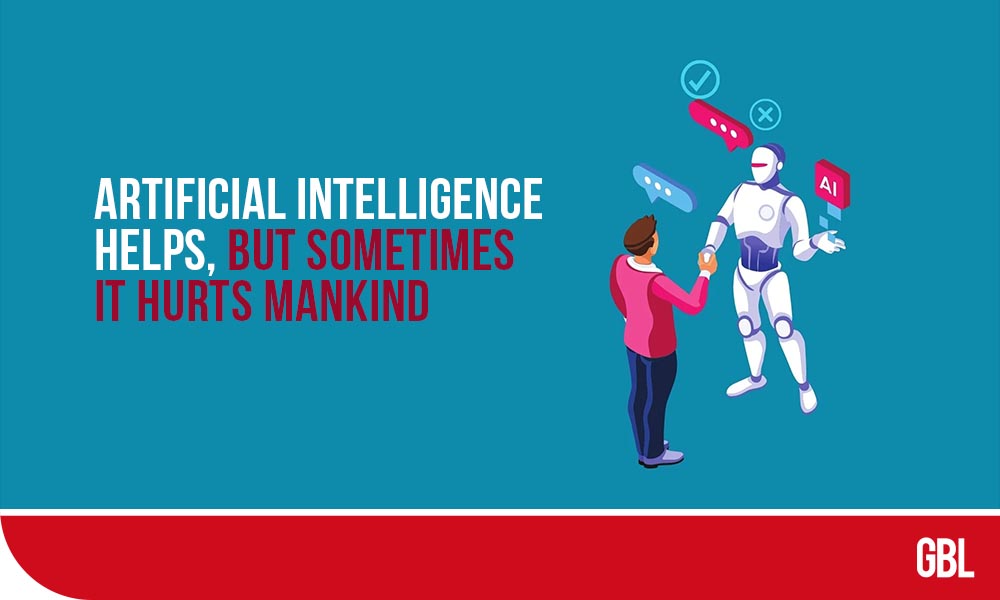Artificial Intelligence (AI) has become an increasingly popular tool among developers, as it has the potential to revolutionize many aspects of our lives, from healthcare and transportation to education and entertainment. In many cases, AI has already made significant contributions that have positively impacted society.
For example, AI-powered algorithms can help diagnose diseases more accurately than humans, assist with complex surgery, and optimize transportation routes to reduce fuel consumption and traffic congestion.
However, like any technology, AI also has its drawbacks and potential negative impacts on society. One concern is that AI could displace human workers, leading to unemployment and income inequality. Another problem is that AI could be used to perpetuate and amplify biases that already exist in society, leading to unfair treatment of particular groups of people. There is also the potential for AI to be used for nefarious purposes, such as creating fake news or manipulating public opinion.
Details on Artificial Intelligence (AI) For Coding
The use of AI for coding has its drawbacks. While AI has the potential to speed up the development process, it can also lead to buggier code due to its limited understanding of programming logic and the complexities of the coding environment. As such, developers must be mindful of the risks associated with using AI to produce code and take the necessary steps to ensure that the code they produce is of high quality.
Potential Benefits & Risks Associated With AI-assisted Coding
When used correctly, AI can help developers better understand the code they are working on and improve their productivity. AI can help developers by creating more accurate simulations and models, automatically detecting and correcting bugs, and creating a clear picture of the functionality of the code.
These benefits can lead to quicker development, improved code quality, and a reduction in the number of defects. However, these benefits depend on AI being implemented correctly.
The use of AI has also been associated with some risks, including the need for additional training to make up for limited understanding of programming logic of AI, the complexities of the coding environment, and the lack of a clear path to turn AI off if something goes wrong. In addition, if not used properly, AI can lead to bugs such as overfitting and underfitting and can cause issues with transparency and reproducibility.
Related: 5 Software Quality Assurance Trends & Benefits
How AI Can Produce Buggier Code
There are several ways in which AI-assisted coding can cause bugs in code. First, AI can produce code that is difficult to understand by human developers. AI algorithms are trained using sets of examples, and they can produce code based on these examples.
As such, the code created by artificial intelligence can be challenging to understand without the proper training. It can be a problem, as developers need to fully understand the code they are writing and the impact of their choices. If developers need help understanding the code that AI produces, they risk creating bugs that could be difficult to detect and fix.
AI can cause bugs by overfitting and underfitting. AI algorithms are trained to find patterns in their given data sets. As such, they are programmed to find the best fit between the code and the data. In some cases, AI algorithms find a fit that is too exact. This is known as overfitting, which can cause problems with the accuracy of the code. Even if the code is correct in certain conditions, it could be incorrect in others.
On the other hand, AI algorithms can also underfit the data. It means that the algorithms do not find an exact match and do not create the correct code. This can lead to bugs by creating code that is less useful than it is intended to be.
Strategies To Avoid Buggier Code
To avoid the risks associated with AI-assisted coding, developers can take some steps.
- Step 1: Developers should train AI algorithms on the right data sets. It is essential to have clean and accurate data sets, which means taking the time to remove any anomalies or inconsistencies in the data.
- Step 2: Developers must be careful with how they use AI algorithms. They should ensure that they understand the code that the algorithms produce and that the code is as accurate as possible. It includes providing that the code is easy to understand and as precise as possible.
- Step 3: Maintaining control of the code produced by AI algorithms is vital. If something goes wrong, developers should have the resources to turn off the algorithms as quickly as possible.
Best Practices For Developers Using Artificial Intelligence
Developers using AI should be aware of the following best practices:
- Be careful about overfitting: It is crucial to select the right set of data to train algorithms on. It is also essential to ensure that the data is clean and accurate.
- Be selective about which algorithms to use: Not all algorithms are useful for all projects. Developers should select algorithms based on their project needs and the data that they have available. They also need to understand the limitations of the algorithms they choose.
- Understand the limitations of AI: AI is not a magical solution that can be applied to any project. Developers need to understand the strengths and weaknesses of the algorithms they select. They also need to understand the limitations of how they can apply the algorithms.
- Be careful about hyperparameter selection: Choosing the right hyperparameters to use is important when training algorithms. This is especially true when selecting between different algorithms.
Ultimately, the impact of artificial intelligence on society will depend on how it is developed and used. Therefore, we must consider the potential consequences of AI and work to ensure that it is used ethically and responsibly. It may involve regulating the development and use of AI, educating the public about its capabilities and limitations, and finding ways to mitigate potential negative impacts. By being proactive and mindful of the possible consequences of artificial intelligence, we can maximize its potential benefits and minimize its potential harms.









